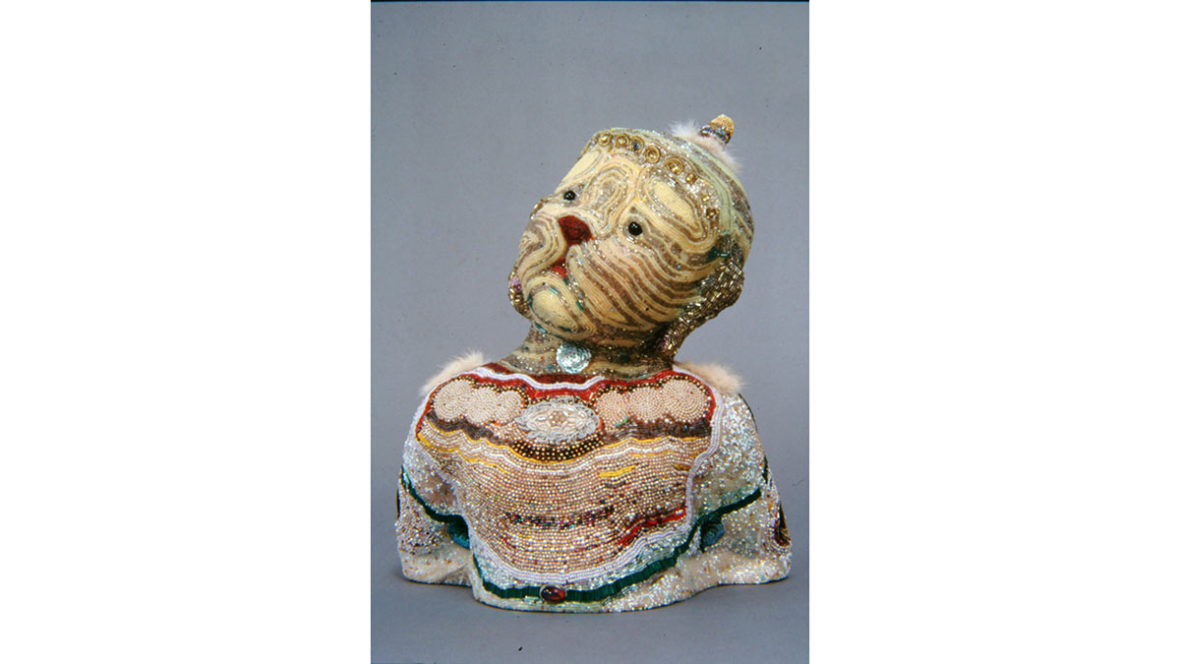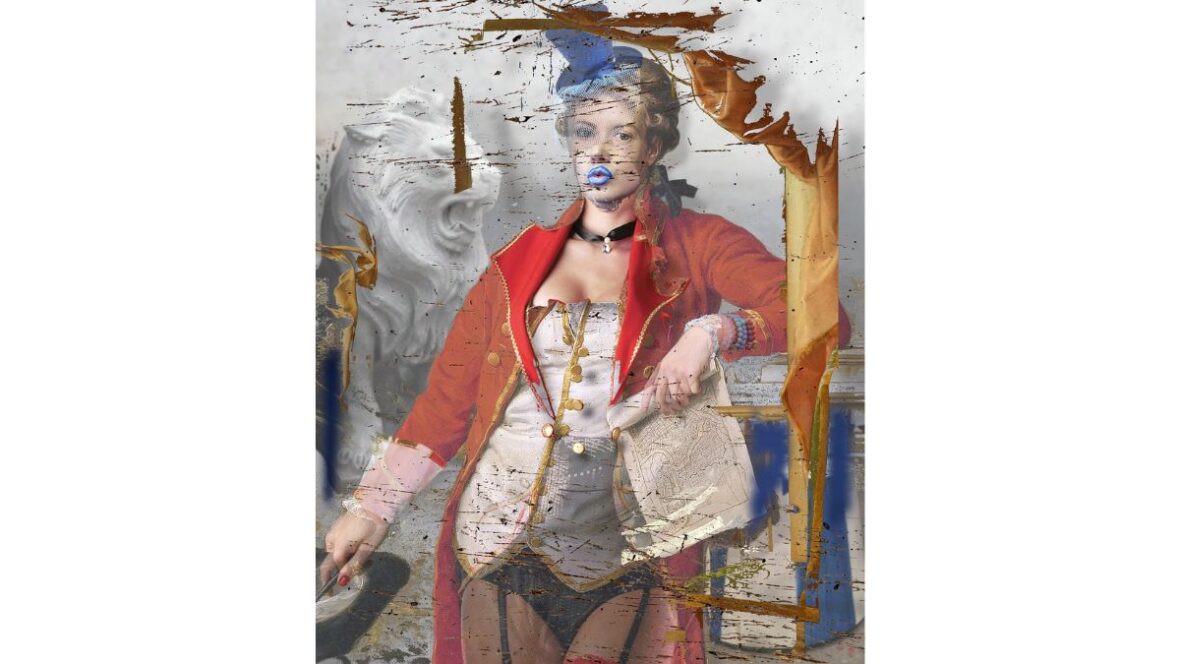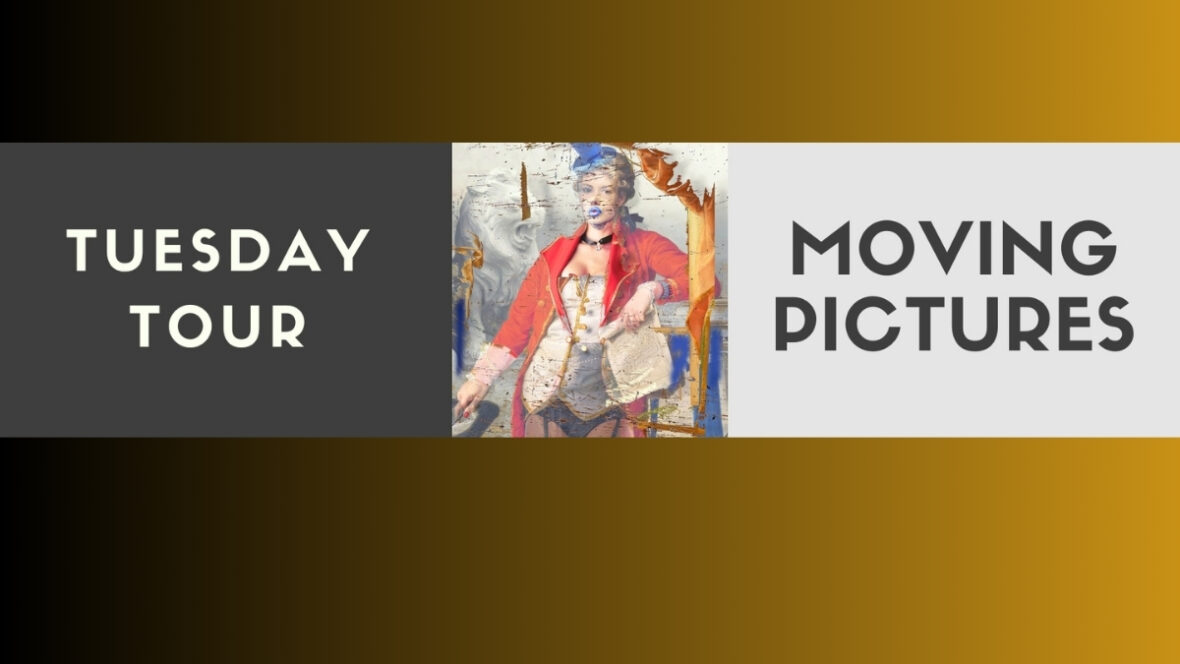Sherry Markowitz:
Shimmer, Paintings
and Sculpture 1979 – 2006
Exhibition Interview
Sherry Markovitz, “Shimmer”
The artist’s commentaries came from an interview conducted by curator Keith Wells in Seattle, February, 2007.
I painted Big Donk in 1979, just after my father died. I remember as a child the lions roaring when I went with my father to the Lincoln Park Zoo. After he died, I went to Woodland Park Zoo in Seattle and was struck by how sad the donkey looked, which echoed my own grief. So in a way, this is a portrait of my father. At that time, I would hose my paintings down. I would paint and then hose down the rice paper and then paint again. I gave the donkey quite a large penis; he seems very nurturing, but I wanted him to be clearly male.
Autumn Buck is one of the early sculptures. I had been painting on the surfaces of these three-dimensional paper-mache forms and was not full satisfied with the way they were turning out, so I decided to let go and cover the entire surface with beads.
Eternal Vigilance was a major undertaking. I used hanging sequins, applied one at a time. I just responded to what seemed natural each time I worked on it and it became very experimental. All of the metallic sequins really shimmer. What I found is that I could constantly combine patterns, so I kept that up throughout the work.
New Guinea Clown Bear was a great piece to do. I remember that I was thinking about Victorian ruffs and New Guinean ceremonial outfits. They both sacrificed comfort for looks. So this bear has a frill around its neck and a bone in its nose. Around the time I made this, I had been walking a lot and finding a lot of goose feathers on the ground. I used mud, bones and feathers on this piece.
Bow Wow Queen was difficult. It is titled after a blanket I had as an infant, which I called my Bow Wow. My mother told me that I used to work it with my fingers, so much so that it was just a rag after a while. This female elk has a frill, so it looks like a queen. My mother died while I was working on it. It was difficult to finish because I was going through that loss and I just couldn’t bring myself to work on this. But I had a show coming up so I did finish it. I wanted to withdraw and empty myself out completely and so just kept putting things from my studio on it until the sculpture was done. It took my mind off things. What started out as a formal confluence also became a reference to the comfort of the blanket, and the memory of that enabled me to finish the piece.
Copper Bear– I wanted to use that small piece of wood in something, so I decided to hang it from the bear. I glued sheets of copper to the surface of the bear that were soft enough to conform to its shape. I really love the color and patina of the copper. I think this is a very elegant piece.
Doll Bear– This is a transitional work. I often lost control of this piece and had to bring it back. I set it aside and brought it back out several times, putting it through a number of transformations before I was satisfied. I love the quality that a piece takes on when you work it so much- adding, removing, adding, removing- sort of like the way I wash out the paintings.
Salamatee is an Indonesian salutation and the spiral hand gesture one uses as a greeting. The green color and shape refer to calligraphy.
Flower Girl is a work that really plays with the crown idea. I made this after I went to Mexico. I was inspired by the color I saw there…you know, there is so much of it everywhere. It’s both subtle and bright simultaneously. I wanted to make the headdress full of flowers and color- festive and bold.
I made Pink Belly several years after I had my son. I started the abstract work after my son was born. It was a clearing of the mind. I went from skinny to full. Again, the pattern evolved while I was making the piece.
Fate is the first big doll I made. I was going to be having a show in New York and I wanted to make something that was really spectacular. I had always collected lots and lots of feathers. And so the skirt is an old crinoline that has feathers stuck in the netting holes. The posture is sort of a greeting. I think I did succeed in getting a very wonderful piece out of it. And the dolls were a new direction for me. I covered only the face and the bodice in beads. The base is all sewn together with “around the world” dolls. I went wild with the color on that one. I totally went all over the place with it. At the time I was struggling with exhaustion, which freed up my mind to wander.
Mary Todd is about Mary Lincoln. I have a sympathy for her as a symbol-she was a woman who was acutely aware and tried to be engaged politically but was hindered by social conventions. I have always been interested in a certain photograph of Mary Todd in a ball dress that her seamstress sewed and that she herself detailed. She was always shopping for trims and flowers and fabrics. She was conflicted during the Civil War. She was Southern with Northern sympathies and was mistrusted by both sides. It was also a time of deprivation in the country, but she could barely control her compulsive spending. She was intelligent, but had a certain madness to her, and that’s why I used flowers in place of her head. This is another one of those pieces that has a ton of stuff from my studio in it. The dress was a found Italian garment.
Mexican dolls is just that, with a classic Caribbean doll thrown in. There are also some empty braids in that painting. It has a sense of unfinished business. I collect dolls, but I don’t collect in the conventional way- I don’t care if they are old or torn or cracked. I look for expressions and costumes. The light purple is the color of a church I visited in Mexico.
Mechanics of Intimacy is a piece that came after I attended a wedding. I sometimes wonder how people manage to find each other, let alone find intimacy. This is about people who can practice only mechanical intimacy, which, through practice, may become real intimacy. “Mechanics” also refers to the interior mechanism that helps a doll walk.
Steel Prayer was all sewn, which creates a flatter surface. The steel beads are from the turn of the century. They made the beads out of old German bullets, so I guess it is a reusing of that material in a constructive way. After 9/11, the only thing that made sense was prayer in a spiritual sense.
Breasted Buddha is one of the half-dolls that I started making after I was in Italy, where I saw many busts in the churches. I used yellow, the color of the spirit. The main bed used is an antique, translucent Czech bead called “greasy yellow” which was used a lot by Native Americans. This piece is a playful, clownlike feminization of the Buddha.
My Mule is a potent political symbol, refers back to the founding of the US- it is an animal of burden, reliability and construction. Also, it comments on the promise of a new beginning given to freed slaves- “forty acres and a mule”- and all the issues that come out of that promise being unfulfilled.
Shine on Me– she is a formidable person, I mean, doll. She has conviction. This was the first time I used such tiny clear beads for the face and hands. China Doll was made with very tiny beads, but they were white. These are translucent. I was really working on getting a flesh tone there, and the beads were so tiny that I had to use a magnifying glass to put them on. There are mirrors on the hands and the dress. It is a call to the spirits. I think Shine on Me is moving toward the light. It wants to receive. It wants the light. This doll makes no bones about that- she wants to be shined on.
Marriage is a simple, yet complex piece. That was the first one on silk. I had this old Japanese silk and one day I just started painting on it. I had been reading a book on the captivity of a white woman among the American Indians. This type of captivity literature came about because there were a lot of mixed marriages between American Indians and whites. Both white women to Native men and white men to Native women and the white women did not always want to go back to their puritanical houses. And so they started coming out with this captivity literature to scare people away from these interracial marriages. Marriage is about being who you want to be, even without the world’s blessing. I like to use dolls in these situations because dolls supposedly don’t have expressions. I want the experience of viewing them to be disarming because you’re not expecting such expression from rigidity.
Two Faced Cross Eyed Baby is about a grumpy baby. And I love incorporating the fancy infant clothing of the nineteenth century- the elaborate gowns and nightshirts. Babies are going to scream and make noise…there is no pretense. This is not a sweet baby. There is a tendency among many doll makers to overly sweeten the depiction of the babies; I wanted to have a noisy baby.
Shimmer refers to my love of water, reflection and light.
Curator
Josine Ianco Starrels
Artist
Sherry Markovitz



